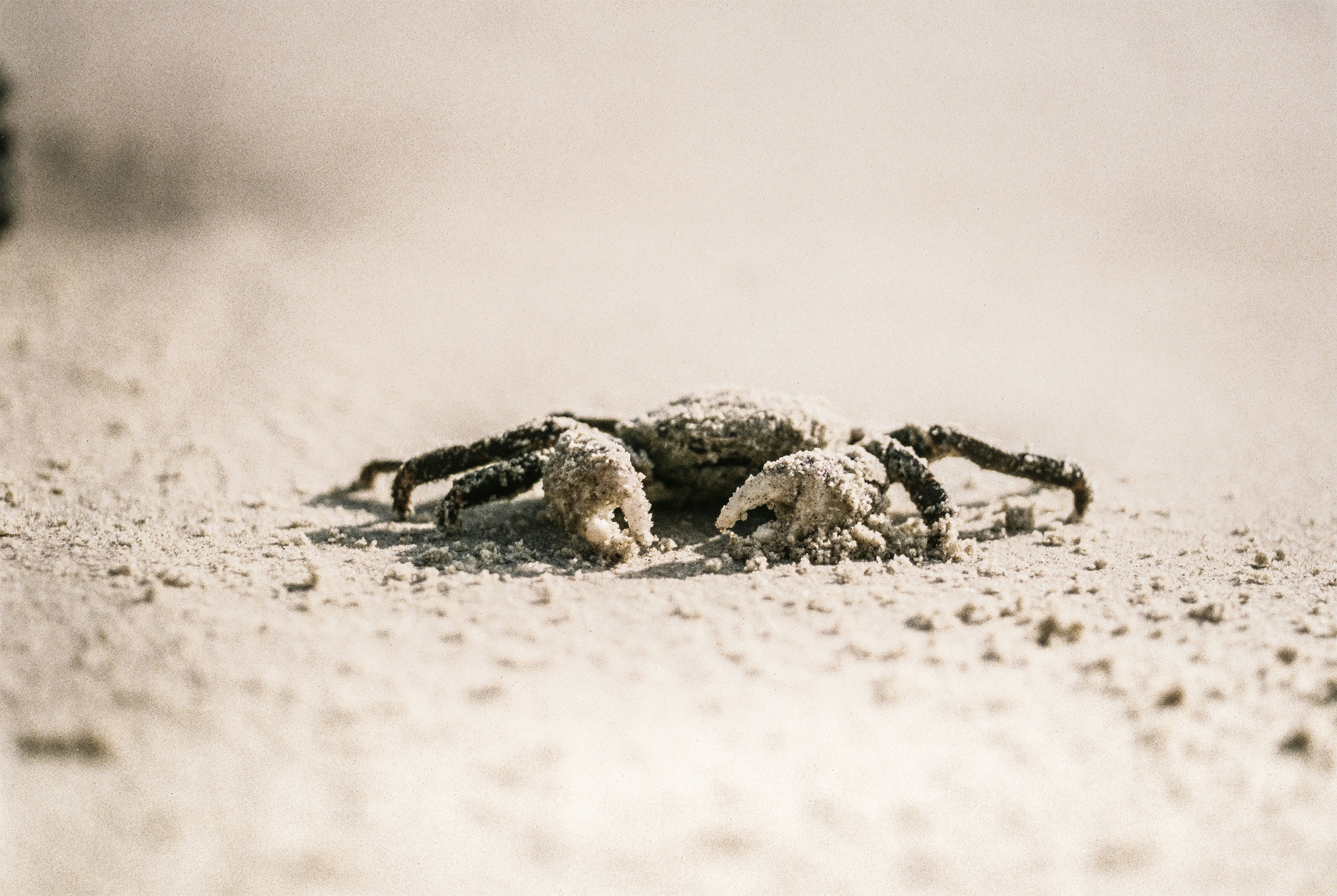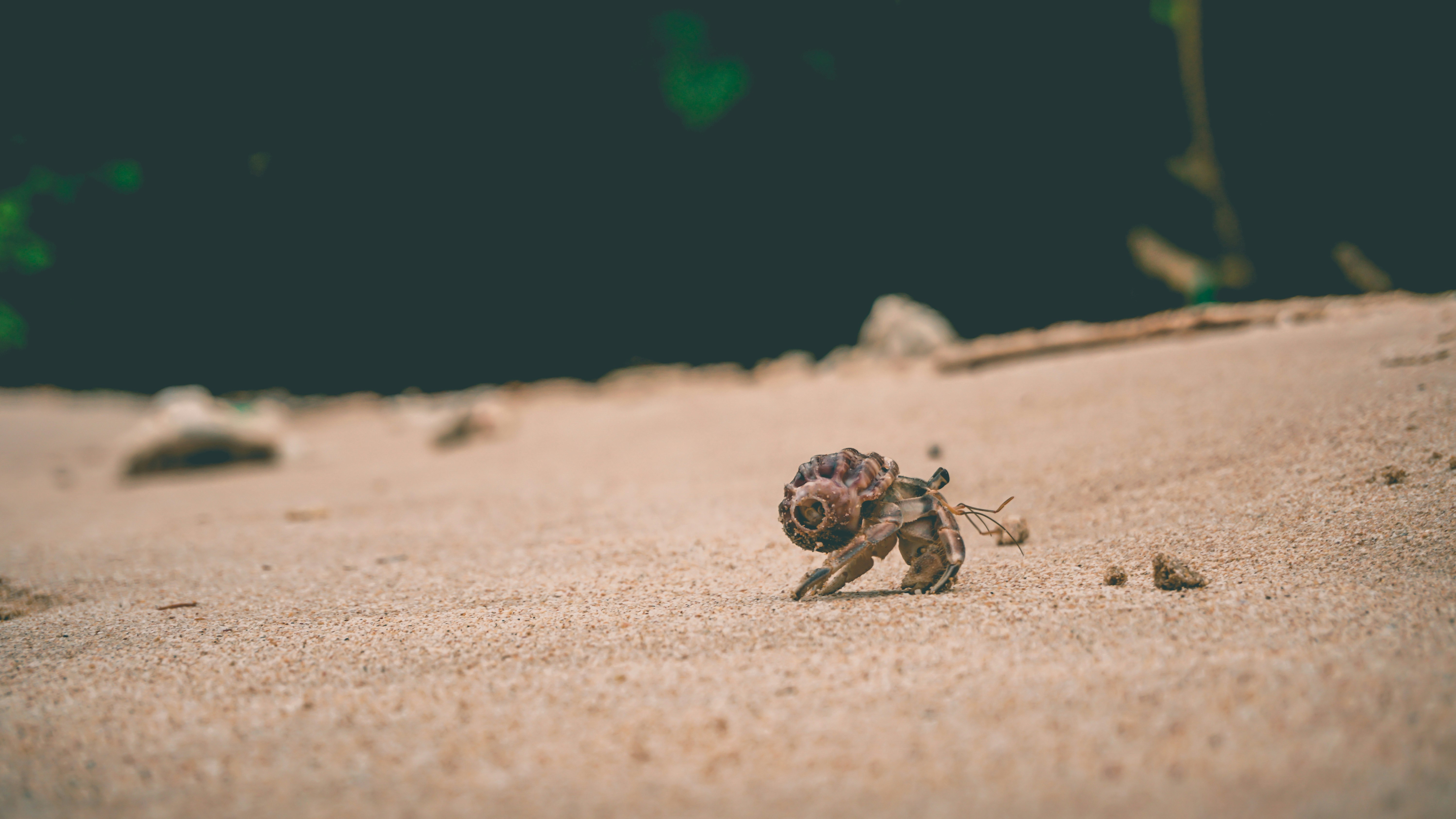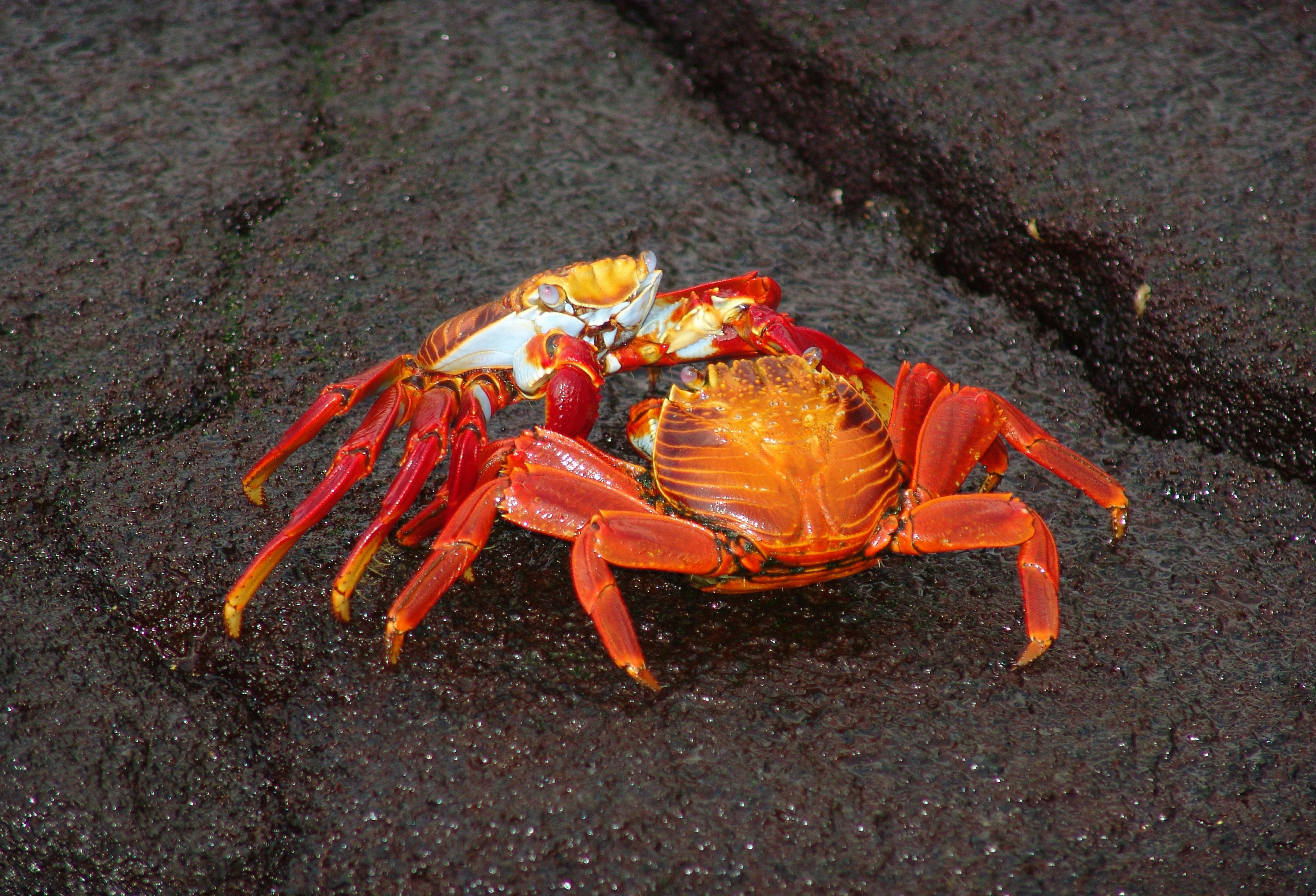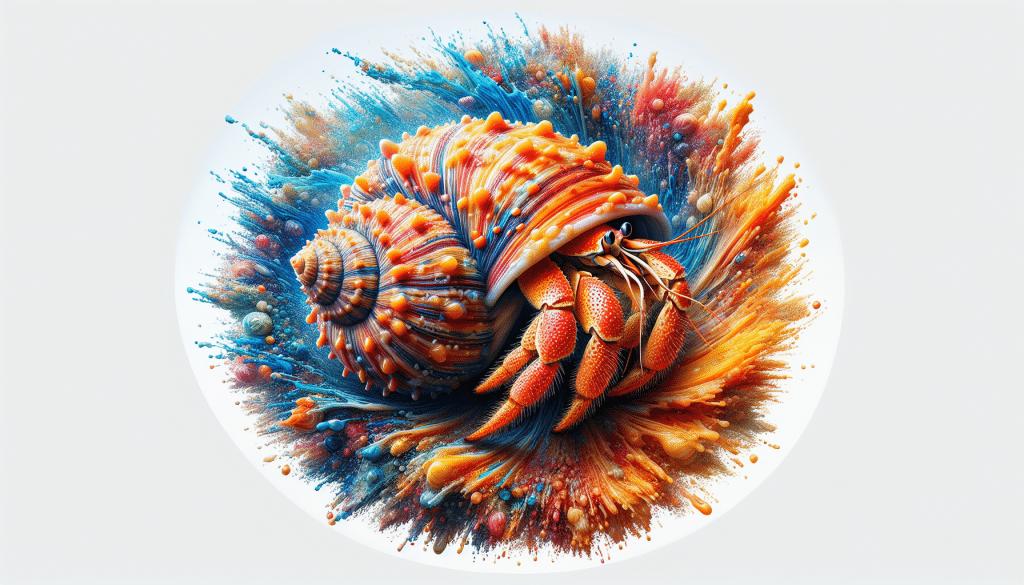So, you’ve got yourself a hermit crab as a pet, but now you’re dealing with a problem: mites. These tiny pests can cause harm to your crab and even lead to serious health issues if left untreated. But fret not, because in this article, we’re going to share some effective ways to eliminate hermit crab mites. By following these methods, you can ensure the well-being of your beloved pet and create a healthier living environment. So, let’s dive in and discover how to get rid of these pesky mites once and for all.

Understanding Hermit Crab Mites
What are hermit crab mites?
Hermit crab mites are tiny, parasitic organisms that can infest the shells and bodies of hermit crabs. These mites belong to the arachnid family and are related to ticks and spiders. They are typically translucent or off-white in color and can be difficult to detect due to their small size.
Life cycle of hermit crab mites
The life cycle of hermit crab mites consists of several stages: egg, larva, nymph, and adult. Mites lay their eggs in the crevices of the hermit crab’s shell or burrow into its exoskeleton. After hatching, the larvae undergo several molts to reach the nymph stage before finally becoming adults. The entire life cycle can range from a few weeks to several months, depending on the environmental conditions.
How do hermit crabs get mites?
Hermit crabs can get mites through various means. One common way is through contact with infested crabs or their shells. Mites can easily transfer from one crab to another when they come into close proximity. Additionally, mites may be present in the environments where hermit crabs are kept, such as tanks or terrariums. They can hitch a ride on plants, substrate, or even on the hands of hermit crab owners.
Types of mites found on hermit crabs
There are different types of mites that can infest hermit crabs. The most commonly found mite species on hermit crabs are the Tropical Rat Mites and the Cryptic Mites. Tropical Rat Mites are typically found in warm and humid regions and can cause significant irritation to both the hermit crab and its owner. Cryptic Mites, on the other hand, are smaller in size and often go unnoticed until they multiply and cause visible signs of infestation.
Impact of Mites on Hermit Crabs
Effects of mites on hermit crab’s health
Mites can have a negative impact on the health of hermit crabs. They can cause irritation, itching, and skin damage to the crab’s exoskeleton. As mite infestations worsen, hermit crabs may experience weight loss, lethargy, and decreased appetite. Severe cases of mite infestation can lead to infections, compromised immunity, and even death if left untreated.
Behavioral changes in infested hermit crabs
Infested hermit crabs may exhibit behavioral changes as a result of mite infestations. They may become agitated, restless, and exhibit increased grooming behaviors in an attempt to rid themselves of the mites. Crabs may also avoid interacting with other crabs or become isolated due to the discomfort caused by the mites.
The effect of mite infestation on crab’s lifespan
Mite infestations can significantly impact the lifespan of hermit crabs. When left untreated, mites can cause chronic stress and weaken the immune system of the crab, making them more susceptible to other diseases and infections. This can ultimately shorten the lifespan of the crab and lead to a decreased quality of life.

Identification of Hermit Crab Mites
Physical features of hermit crab mites
Hermit crab mites are very small and can be challenging to spot with the naked eye. They are typically less than 1mm in size and have elongated bodies with eight legs. Mites may appear translucent or off-white, making them blend in with the color of the hermit crab’s shell or exoskeleton.
Common signs of mite infestation
There are several signs to look out for to identify a mite infestation in hermit crabs. These include excessive scratching, redness or discoloration on the crab’s exoskeleton, visible mites crawling on the crab or its shell, and the presence of tiny white eggs or fecal matter inside the shell. If you notice any of these signs, it is crucial to take immediate action to eliminate the mites.
Examining your hermit crab for mites
To thoroughly examine your hermit crab for mites, gently hold the crab and carefully inspect its exoskeleton, especially in areas where mites are known to hide, such as joints, gills, and around the eyes. Use a magnifying glass or a well-lit area to aid in identifying the presence of mites. It is essential to handle your hermit crab with care to avoid causing unnecessary stress during the examination process.
Prevention of Hermit Crab Mite Infestation
Keeping the crab’s environment clean
Maintaining a clean and hygienic environment is crucial in preventing mite infestations in hermit crabs. Regularly clean and disinfect the tank or enclosure where the crabs are kept. Remove any uneaten food promptly, as it can attract mites and other pests. Additionally, provide fresh, filtered water and ensure proper humidity levels to deter mites from thriving in the crab’s habitat.
Proper crab handling and care
Proper handling and care of hermit crabs can also help prevent mite infestations. Always wash your hands before and after handling the crabs to prevent the transfer of mites or other harmful organisms. Handle the crabs gently and avoid exposing them to stressful conditions, as stress can weaken their immune system and make them more susceptible to mite infestations.
Importance of quarantine for new crabs
When introducing new hermit crabs to your existing crab population, it is essential to quarantine them first. Quarantine allows you to observe and monitor the new crabs for any signs of mite infestation or other health issues before integrating them with your current crabs. This precautionary measure can help prevent the spread of mites and protect the health of your entire crab community.

Home Remedies for Mite Infestation
Bathing hermit crabs
Bathing hermit crabs in lukewarm water can help alleviate some mite infestations. Fill a shallow container with lukewarm water and allow the crabs to soak for a few minutes. This can help drown and wash away some of the mites from the crab’s body. Be cautious not to submerge the crab’s head or cover the gills with water, as this can cause harm to the crab.
Utilization of saltwater mixtures
Mites are sensitive to high salt concentrations, so creating a saltwater mixture can be an effective home remedy. Mix aquarium salt or sea salt with dechlorinated water to create a mild salt solution. Gently mist or spray the solution directly onto the hermit crab’s exoskeleton or shell. The salt will dehydrate and kill the mites while being safe for the crab.
Making use of food grade diatomaceous earth
Food grade diatomaceous earth, a natural powder composed of microscopic fossils, can be used to combat mite infestations. Dust a small amount of the powder onto the hermit crab’s exoskeleton, making sure to avoid the crab’s eyes and gills. The diatomaceous earth works by dehydrating the mites and causing them to die. Be careful not to inhale the powder or make it too dusty, as it can be harmful when inhaled.
Commercial Products for Mite Elimination
Recommendations for mite sprays
There are various commercial mite sprays available that are specifically formulated to eliminate mites on hermit crabs. These sprays usually contain safe and effective ingredients, such as essential oils or insecticides, that can help eradicate mite infestations. Follow the instructions on the product label carefully and apply the spray as directed. Remember to remove the hermit crab from its enclosure before spraying to prevent any harm.
Using mite dips and washes
Mite dips and washes are another effective option for treating hermit crabs infested with mites. These products are usually diluted with water and applied to the crab’s exoskeleton or shell using a soft cloth or sponge. The active ingredients in the dips or washes work to kill the mites and alleviate the infestation. It is important to choose a mite dip or wash that is specifically formulated for hermit crabs and follow the instructions provided.
Finding a trustworthy mite product
When selecting a commercial product for mite elimination, it is essential to choose a trustworthy brand and carefully read reviews or seek recommendations from experienced hermit crab owners or veterinarians. Look for products that are specifically designed for hermit crabs and have a proven track record of effectively treating mite infestations. It is also crucial to follow the instructions provided by the manufacturer to ensure safe and successful mite elimination.

Consulting a Veterinarian for Severe Mite Infestations
When to consult a vet?
In cases of severe mite infestations where home remedies or commercial products are not effective, it is crucial to consult a veterinarian experienced in treating hermit crabs. Additionally, if you notice any signs of secondary infections or significant deterioration in your hermit crab’s health, it is recommended to seek professional veterinary care. A veterinarian will be able to provide a comprehensive assessment and recommend appropriate treatment options.
Expected vet procedures for mite elimination
When consulting a veterinarian for severe mite infestations, they may perform several procedures to eliminate the mites and ensure the well-being of your hermit crab. These procedures may include medicated baths, topical treatments, or even oral medications. The veterinarian will tailor the treatment plan based on the severity of the infestation and the specific needs of your hermit crab.
Post-vet care for your hermit crab
After receiving treatment from a veterinarian, it is important to follow their post-care instructions diligently. This may include maintaining proper hygiene in the crab’s environment, continuing medication or treatment as prescribed, and closely monitoring the crab’s recovery. Regular check-ups may be necessary to ensure a complete elimination of mites and to address any other health concerns that may arise.
Maintaining a Mite-Free Environment
Regular cleaning of the crab’s home
To maintain a mite-free environment for your hermit crabs, it is imperative to establish a regular cleaning routine. Clean the tank or enclosure at least once a week, removing any uneaten food, feces, or debris. Thoroughly rinse and disinfect any objects, such as shells or toys, before placing them back in the tank. Regular cleaning will help prevent mites from establishing a habitat in the crab’s environment.
Providing a safe and mite resistant habitat
Creating a mite-resistant habitat for your hermit crabs can help prevent future infestations. Use a substrate that has low moisture content and is resistant to mold or mites. Avoid using substrate materials that mites can easily burrow into, such as sand or coconut fiber. Additionally, regularly inspect and replace any damaged or deteriorating shells to eliminate potential mite hiding spots.
Encouraging a mite-free play area
Providing a designated play area for your hermit crabs can help minimize the risk of mite infestations. Set up a separate container with clean, mite-free substrate for the crabs to explore and play in. This allows for easier cleaning and reduces the chances of mites being introduced to the main habitat. Regularly disinfect and refresh the play area to ensure a safe and mite-free environment for your hermit crabs.

Follow-up Measures Post Mite Treatment
Routine check-ups for mite recurrence
After successfully treating a hermit crab for mite infestation, it is important to schedule routine check-ups to monitor for any signs of mite recurrence. Your veterinarian can advise on the appropriate frequency of check-ups based on the severity of the previous infestation and the health condition of the crab. Early detection of mite recurrence is crucial to prevent the infestation from spreading and causing further harm.
Continued prevention measures
Even after successfully eliminating mites from your hermit crab and its environment, it is important to continue implementing preventive measures to minimize the risk of future infestations. Regularly clean the tank or enclosure, practice proper hygiene when handling the crabs, and be cautious when introducing new crabs to the environment. By maintaining a vigilant and proactive approach, you can significantly reduce the chances of mite infestations recurring.
Observing crab’s recovery and health improvement
Following mite treatment, closely observe your hermit crab for signs of recovery and health improvement. Look for increased activity, healthy appetite, and improved grooming behaviors. Monitor their weight, shell condition, and overall appearance to ensure they are returning to a state of optimal health. If any concerns arise during the recovery period, do not hesitate to consult your veterinarian for additional guidance and support.
Keeping Hermit Crabs Happy and Mite-free
Nurturing a stress-free environment for crabs
Creating a stress-free environment is essential for maintaining the overall well-being and happiness of hermit crabs. Minimize loud noises, sudden temperature changes, and other stressful stimuli that can compromise their immune system. Provide plenty of hiding spots, climbing structures, and mentally stimulating toys to keep them engaged and reduce boredom. A stress-free crab is less likely to succumb to mite infestations and other health issues.
Maintaining a balanced diet for hermit crabs
A well-balanced diet is crucial for the health and immune system of hermit crabs. Offer a variety of fresh and nutritious foods such as commercial hermit crab pellets, fruits, vegetables, and calcium-rich supplements. Ensure a clean and fresh water source is always available. Proper nutrition will help strengthen the crab’s immune system and make them more resilient to mite infestations and other diseases.
Providing adequate care and attention
Hermit crabs thrive when they receive proper care and attention from their owners. Spend time interacting with your crabs, observing their behavior, and providing any necessary maintenance or treatments promptly. Regularly check their shells for any signs of damage or potential mite hiding spots. By being attentive and proactive, you can prevent mite infestations and ensure the well-being and happiness of your hermit crabs.
In conclusion, understanding hermit crab mites and their potential impact on the health and well-being of hermit crabs is crucial for every crab owner. By identifying the signs of mite infestation, implementing preventive measures, and utilizing appropriate treatment options, you can effectively eliminate mites and create a mite-free environment for your hermit crabs. Maintaining a clean habitat, providing proper care and nutrition, and nurturing a stress-free environment are essential in keeping your hermit crabs happy and mite-free for years to come.


